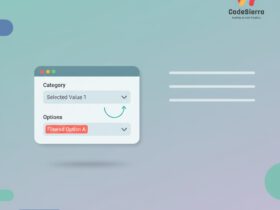Overview
When working with Salesforce data imports, you’ll commonly choose between the Salesforce Import Wizard (web UI) and the standalone Data Loader (client/CLI). Both tools move CSV data into Salesforce, but they target different use cases, volumes, and levels of control. This post explains the key differences so you can pick the right tool for your scenario.
Key differences
Import Wizard is designed for admins who need a simple, guided, browser-based import for standard objects (Accounts, Contacts, Leads, Solutions, Campaign Members) and simple custom object imports. It provides a point-and-click experience and basic mapping, ideal for one-off or low-volume imports.
Data Loader is a Windows/Mac/CLI tool built for power users, developers, and integrations. It supports large data volumes, automated/command-line operations, advanced mapping, and extra operations such as hard delete and bulk upsert using External IDs.
Supported objects & operations
Import Wizard: limited to common standard objects and simple custom object imports. Supports Insert, Update, Upsert (limited), and Delete (limited) through the UI.
Data Loader: supports all objects (standard and custom), plus complex operations: Insert, Update, Upsert, Delete, Hard Delete, Export, and Export All (includes archived & deleted records). It’s the only option when you need hard delete or access to the Recycle Bin data via Export All.
Volume & performance
Import Wizard: best for low-to-moderate volumes (typically up to ~50,000 records depending on object and org limits). It uses the SOAP API and the browser UI, so performance is lower for very large datasets.
Data Loader: built for medium-to-high volumes. It can use Bulk API for efficient processing of millions of records and is much faster for large imports. If you need to load more than tens of thousands of records reliably, choose Data Loader with Bulk API.
Automation & scheduling
Import Wizard: manual, interactive web UI — not suitable for automation.
Data Loader: supports CLI and process automation using configuration files (process-conf.xml), letting you schedule or integrate imports in a CI/CD or ETL pipeline. Example CLI invocation:
java -cp dataloader.jar com.salesforce.dataloader.process.ProcessRunner -Dsalesforce.config.dir=conf -Dprocess.name=MyImport
Error handling & logging
Import Wizard: shows basic success/failure counts and a downloadable error file for failed rows.
Data Loader: produces detailed success and error CSV files with row-level error messages, enables retry strategies, and provides richer logs useful for debugging complex failures.
Data mapping & relationships
Import Wizard: offers a simple mapping UI; supports lookups using Salesforce IDs and limited External ID handling. Not ideal for multi-step relationship loads.
Data Loader: supports saved mappings, External ID upserts, and multi-step loads to maintain parent-child relationships (load parents first, then children referencing External IDs). This makes it better for complex data models.
Security & permissions
Both tools respect Salesforce user permissions and object-level/field-level security. Data Loader can be run using API-enabled users and uses OAuth or username/password + security token for authentication; Import Wizard uses the browser session.
When to pick which
Choose Import Wizard when:
– You need a quick, one-off import for accounts/contacts/leads or simple custom objects.
– The dataset is small and you prefer a guided UI.
– You don’t require automation or hard delete.
Choose Data Loader when:
– You have large volumes (tens of thousands to millions) or need faster processing.
– You require automation, CLI scheduling, or integration with ETL tools.
– You need advanced operations like hard delete, Export All, or complex mapping with External IDs.
Best practices
– Always back up data (Export) before performing deletes or large updates.
– Use External IDs for reliable upserts and relationship mapping.
– Test imports in a sandbox with a representative sample before production loads.
– Monitor API usage and Bulk API job status when using Data Loader for large imports.
Summary
Both tools are essential in a Salesforce admin/developer toolkit. The Import Wizard is great for simplicity and quick, low-volume tasks. Data Loader is the go-to for scale, automation, and advanced data operations. Select the tool that matches your volume, complexity, and automation needs.










Leave a Reply